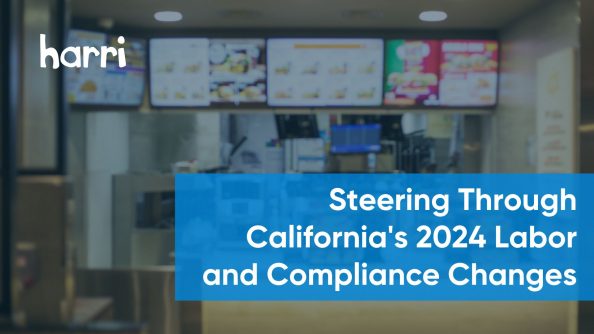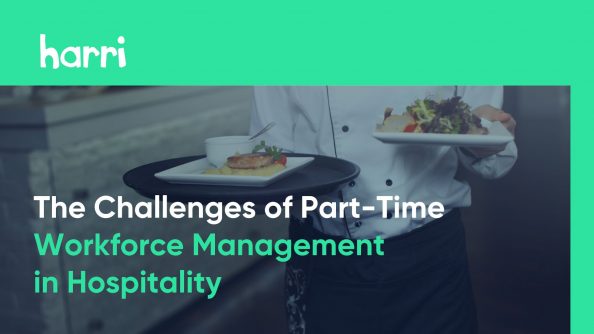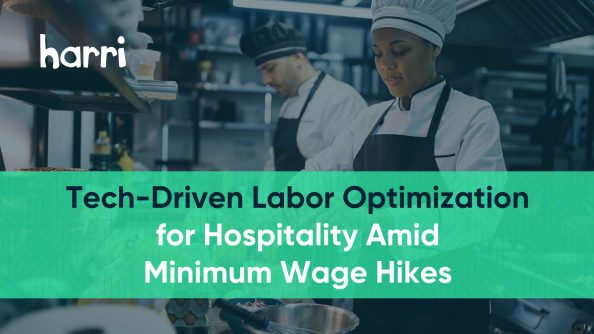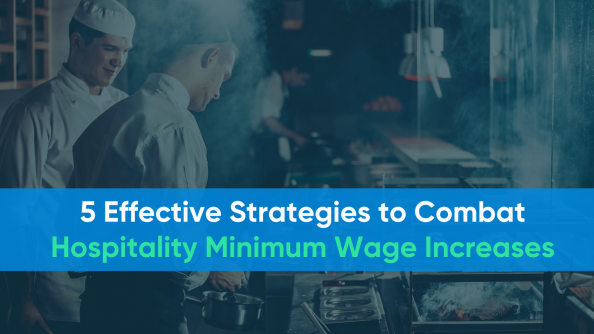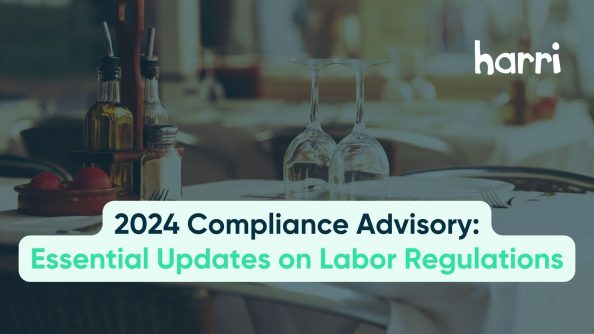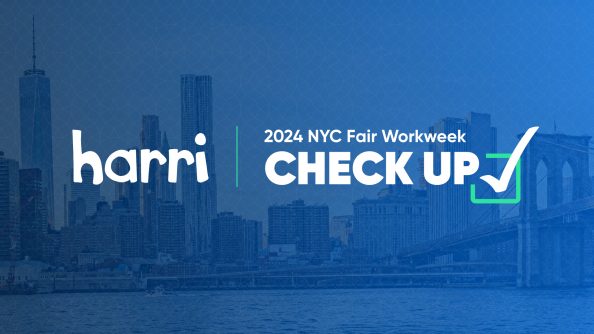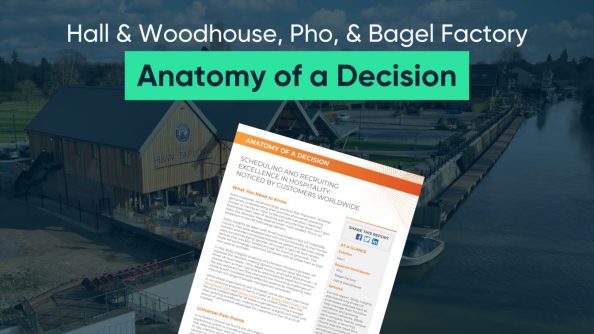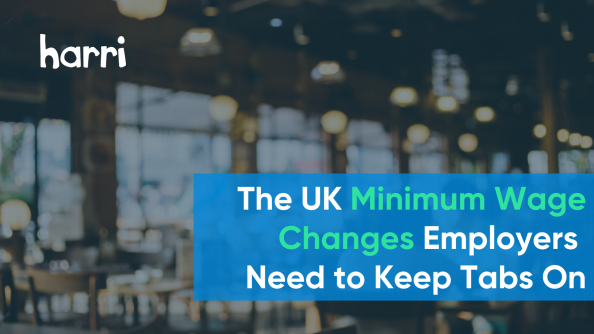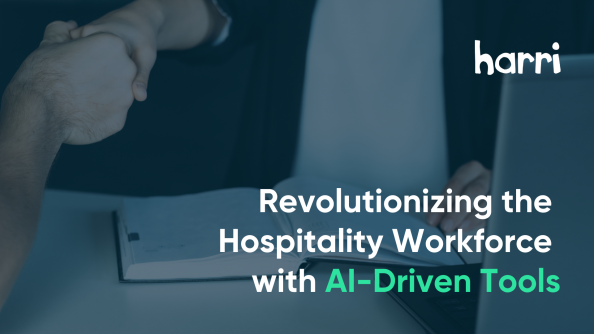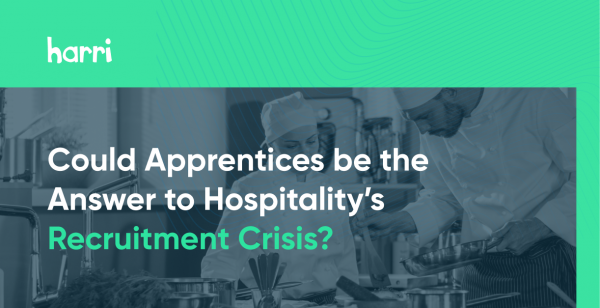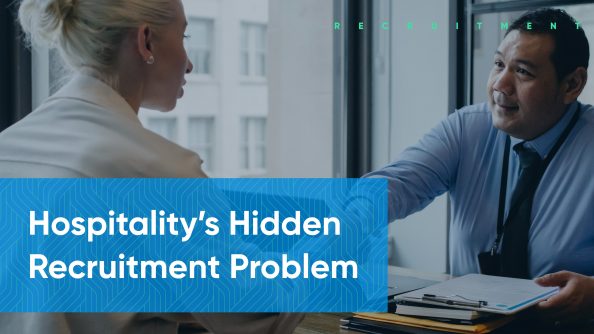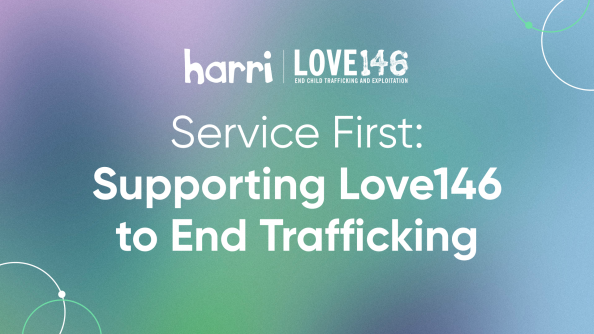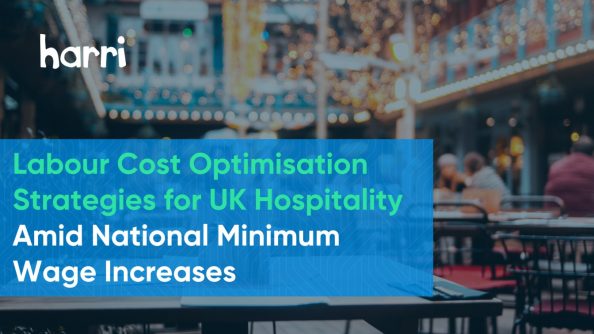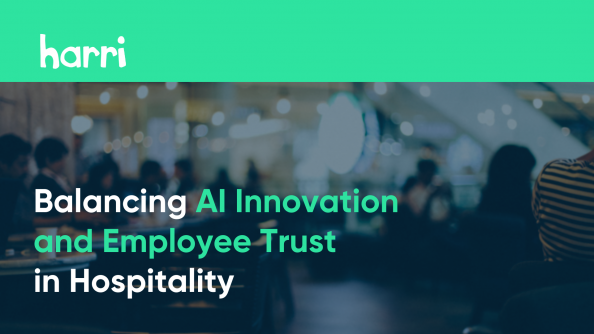Balancing Productivity and Employee Satisfaction in Hospitality
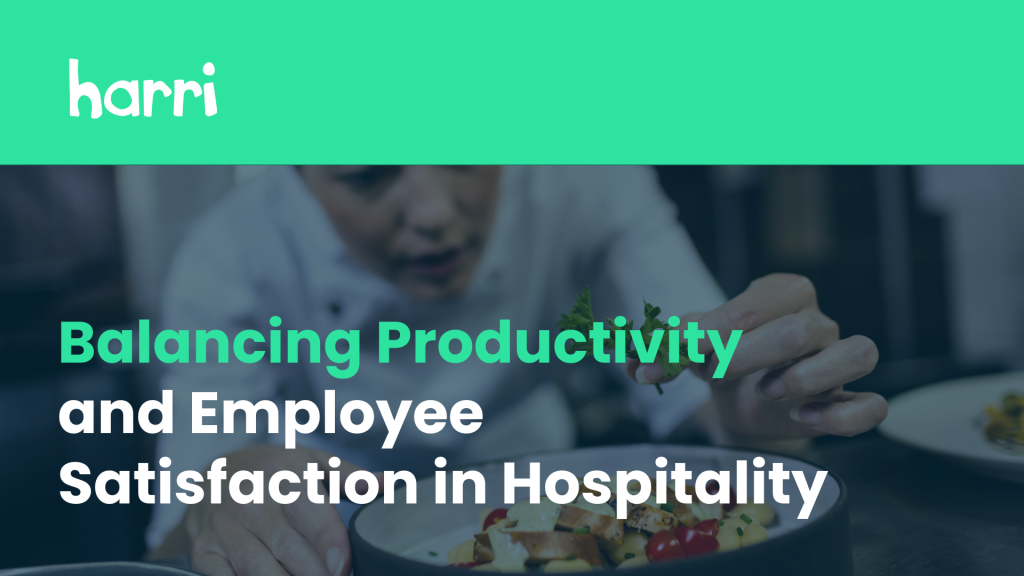
- By Harri Insider Team | January 23, 2024
The hospitality industry faces a lot of unique challenges, when it comes to talent acquisition and engagement, but one of the most important goals is to find an effective way to balance on-the-job productivity with employee satisfaction. Good business owners and management teams are aware that happy employees do better work and are more likely to stay long-term in their role. Guests and customers perceive a positive environment and benefit from a strategy that retains employees, but how can this be done without sacrificing prosperity or productivity levels? Let’s dive into this a little deeper!
Successful operators develop best practices that can be developed and followed to work towards this daily balance. Plus, using Harri’s workforce management solutions can go a long way towards achieving the necessary balance, simultaneously enhancing your operational efficiency and employee morale.

The Importance of Balancing Productivity with Job Satisfaction
Without job satisfaction and a sense of purpose in their role, employees can quickly grow dissatisfied. Money may not be enough to inspire an unhappy employee to go to work every day or to do their best work. Without everyone giving their best, productivity may suffer. This is why finding the balance between job satisfaction and employee productivity levels is critical to long-term success for both the employee and the business. It may seem like an ongoing challenge, but a solid labor management system (also referred to as a workforce management system or software) may be just what you’re looking for in your Human Resources department’s tool arsenal.
Understanding the Link Between Productivity and Satisfaction
How do we quantify the link between productivity and satisfaction? There is no hard and fast rule but consider a few pieces of data you can pull together by looking at your company’s history or speaking with your management team. You will quickly see that departments with a higher level of employee attendance get more done, and it doesn’t take much experience in the industry to know that employees are more likely to go to work each day and complete their tasks if they feel valued and are happy.
An employee who feels valued and is compensated properly goes to work more often, for one thing, according to a study by Lorman, happy employees take 10 times fewer sick days per year than unhappy ones. That’s a significant number! That same study shows that only 25% of employees who quit their jobs cite money as the main reason. There is so much room for improvement and so many ways to help employees be inspired to show up and attain the level of productivity your business requires.
The Consequences of Imbalance in Productivity and Satisfaction
Simply setting goals for employees to attain won’t cut it. Being organized and knowing what each person needs to do is important, but if employees are hounded to get things done, especially if they’re feeling overloaded as it is, they may dread going to work.
Leaving work each day exhausted is not the same as ending the day feeling satisfied with your contributions. If employees are feeling overwhelmed and underappreciated, you might need to reevaluate your labor management system; that system can help you assess the amount of work each person is required to do and inform you how you can change job requirements or hire the right amount of people to get things done without chasing away good employees who give up in frustration.
The reverse – focusing too much on employee satisfaction – can also be a financial drain that leaves guests unsatisfied because the employees aren’t tasked with enough requirements to offer their best, or employees have so many paid days off or shorter hours, leaving gaps in coverage. How do you find the best balance without having to continuously attempt to figure it out?
Effective Strategies for Measuring Employee Productivity
It may initially seem like a time-consuming plan to develop, but once you have your strategy on how to measure employee productivity in place, you won’t need to reinvent the wheel in the future. With simple yearly reviews and minor tweaks, you should be able to utilize your plan, in conjunction with best practices, fairly and effectively for perpetuity. Your plan and those best practices aren’t mutually exclusive, especially if you use Harri’s labor management system to increase job satisfaction.
What Metrics and KPIs Can Measure Productivity?
Every business is going to measure productivity in a way that considers that business’s culture and style, but there are several universal KPIs (Key Performance Indicators) to keep in mind when you assess productivity in the hospitality sector.
One KPI is operational costs. For example, are you spending too much, or too little, on salaries or paid time off? Another one to consider specific to hotels is your average occupancy rate. Is it suffering due to unhappy guest experiences with staff or with something an employee can control? Take a look at your employee retention rate or compare your staffing hours with guest satisfaction survey results. (And if you’re not doing surveys, give it another thought! There is so much information to be had from listening to your customers!)
Staff hour numbers can be very enlightening, and you can total up the number of sick days/hours used along with how often those same employees seek out HR help for problems on the job.
The Role of Labor Management Systems in Monitoring Productivity
We’ve mentioned labor management systems a couple of times in this article, but what exactly do they offer, and how will they help you run your business? There are quite a few benefits to utilizing a system, and they will pay off for you before too long.
A good labor management system is a form of tracking software, one that tracks time and attendance along with offering a place to handle scheduling. If your management teams have access to one place to complete all these tasks, not only are they increasing their team’s productivity, but they’re helping their own efficiency improve.
Imagine how much money a business can save by having a clear visual system that shows gaps in the schedule or where you may have scheduled too many employees at once. It also illuminates when staffers don’t get enough hours, so there is a culture of fairness.
Harri’s workforce management software also works in tandem with our Communication and Engagement features. The app is a one-stop shop for interacting with your employees, so they can handle all their company business in one place, from signing in to reading important company messages. You can even add surveys to measure their satisfaction levels in the same app that provides them a way to reach out to their manager with questions, concerns, or calling in should they be ill.
The Communication and Engagement platforms also allow for something else that is very important for employee satisfaction: recognition. Everyone likes a shoutout when they go above and beyond or if they meet a goal, such as their first anniversary on the job. It’s easy for managers to place these posts where everyone can see and only takes a few brief minutes to make someone’s day.
Enhancing Job Satisfaction in Hospitality Workforce
Are you utilizing your employees to the best of their skills? Paying attention to your team members’ strengths and weaknesses gives you more information to match roles to people. People in general are happier doing something they know and like and feel they are good at.
If employees can easily reach their manager to discuss the number of hours they work, and any scheduling problems, those employees are also going to feel more satisfaction while at work. They will be able to maintain a balance between work and home life, while increasing productivity in both places. This is vital to retaining dedicated employees who want to help your business succeed. A positive work environment makes for a place where people want to be and where they want to grow their careers.
Implementing Recognition Programs and Career Development Opportunities
As mentioned above, employee recognition goes a long way towards making people feel appreciated and valued. It’s so much more than just a fair paycheck. According to a 2023 report by Gallup, employees who receive great recognition are 20 times more likely to be engaged on the job. That’s a huge number that’s so easily achieved by acknowledging their efforts.
Employees who give their best and offer up solutions should be considered for new roles with more responsibilities when possible, so career development opportunities can also serve as motivators to grow satisfaction and retention rates. It’s important to be able to communicate to your team about possibilities for advancement or new positions so they can work towards those goals. When someone feels that their efforts are seen, they are more likely to continue to put forth the work and perform for your business on a higher level.
Scheduling Flexibility and Fair Workload Distribution
Dealing with guests in the hospitality industry can be trying at times. That’s just one strong reason to inquire with your team about their schedules. Are the same people given the most difficult hours regularly, or do employees feel there is preferential treatment? Burnout is real, and an efficient workforce management system can help avoid this.
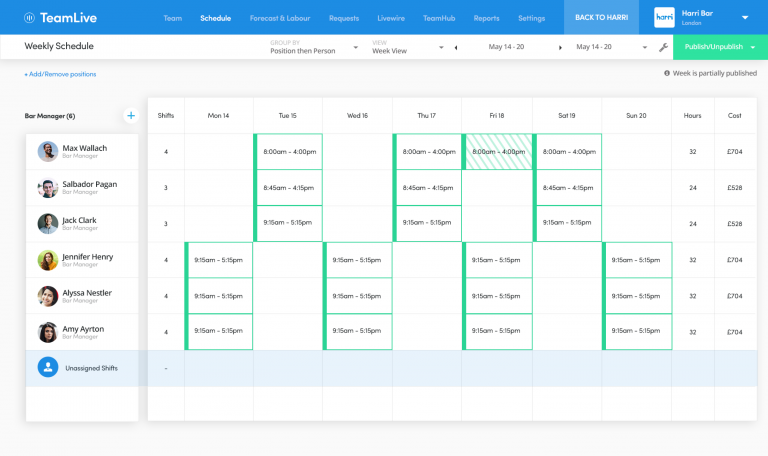
Harri’s Comprehensive Workforce Management Solutions
It can be difficult to find the best way to measure employee productivity but let Harri’s workforce management software take that weight off your shoulders. Harri’s solutions can be used to balance productivity and satisfaction, because not only does it provide all the workforce tools you need, but it is focused on the hospitality industry and its unique needs.
Features of Harri’s Solutions for Productivity and Satisfaction
Getting started on managing productivity and enhancing your employee satisfaction levels is easy with Harri’s Engage, Scheduling, and Communication tools. Everything is in one place for easy access by your entire team, and our team is here to help if you have questions or need guidance.
Optimize your workflow by meeting your team where they are. Work smarter not harder, with our scheduling software designed for hospitality teams, and unify communications by giving messaging options normally found in a separate platform. Your employees and management can interact on a private level, group level, or company-wide should the news be big enough. That’s a powerful statement to your team that they matter!
Need a real-world example of the possibilities for success using Harri’s solutions to balance productivity and employee satisfaction? Look at this case study with Cafua Management Company, a company with 225 locations in seven different states. With Harri’s help, this major Dunkin’ franchise operator improved their workforce performance with intelligent scheduling tools and consolidated 11 unique technologies with our all-in-one HCM and workforce management technology solution.
Creating a Valued and Motivated Workforce with Harri
Balancing productivity and employee satisfaction don’t need to continue to be a daily problem if your team feels valued and motivated. Using Harri’s workforce management software can help solve your staffing problems while increasing your productivity, which of course contributes to profitability. Reach out today to request a demo to learn more about how we can help your business.

